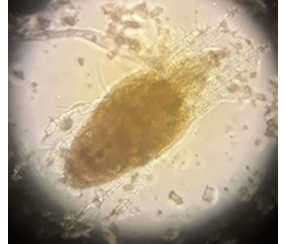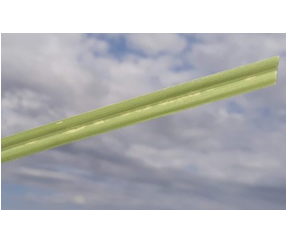FuEDEI Takes A Preliminary Look into the Biological Control of Pampas Grass, and Invasive Grass from South America
By Fernando Mc Kay1, Guillermo Cabrera Walsh1, and Freda Anderson2
1FuEDEI (Foundation for the Study of Invasive Species), Hurlingham, Argentina
2CERZOS-CONICET, Bahia Blanca, Argentina
Invasive, non-native grasses are strongly associated with frequent and widespread wildfires in the U.S. These threaten valuable native environments where native plants are not as well adapted to short-intervals between fires, and hotter fires as are the invasive grasses. The economic impact of invasive plants in general is significant in the U.S. For instance, each year, control, monitoring, and outreach activities performed to deal with invasive plants cost California at least $82 million. Pampas grass and purple pampas grass are two perennial grasses from South America that are considered a fire hazard. Pampas grass is invasive in Europe, South Africa, Australia, New Zealand, Hawaii, as well as western USA (California, Oregon and Washington states). Mechanical and chemical methods to control invasive plants in large areas are expensive, labor intensive and impact negatively on the environment. In order to achieve pampas grass suppression or prevent its expansion at the landscape level, classical biological control (CBC) should be considered, likely integrated with chemical and mechanical control approaches. Weed CBC, the intentional introduction of host-specific antagonists of a target weed from their native range into the region where the plant has become invasive, offers an ecologically sound, cost effective, and sustainable control option as a component of an integrated weed management program. Since 2020 FuEDEI has been conducting natural enemy surveys on pampas grass in central and northern Argentina (Fig. 1). As a result, one phytophagous mite (Fig. 2), several plant hopper species (Fig. 3), and a seed-feeding moth (Fig. 4) have been discovered. Recent surveys revealed the presence of an unidentified seed-feeding midge, assumed to be native to South America and probably accidentally introduced in Europe. In addition, there are records of pathogens in Argentina that are deemed particularly interesting and worth studying further (F. Anderson, personal communication).
Present efforts are focused on developing a proposal with potential cooperators from the USDA-ARS-Invasive Species and Pollinator Health: Albany, CA, University of California, Santa Barbara, and California Department of Food and Agriculture, to seek funding from federal/state agencies and the private sector to support research and development of a pampas grass project.

Figure 1. Pampas grass surveyed sites in central and western Argentina between 2020-22.


Figure 2. Mite and damage along the midrib of pampas grass leaves.


Figure 3. Planthoppers


Figure 4. Larva and adult of an unidentified Gelechiidae moth.
Contact: Fernando Mc Kay
The Foundation for the Study of Invasive Species (FuEDEI), formerly known as the South American Biological Control Laboratory (SABCL), is located in Hurlingham, Argentina, near Buenos Aires. The SABCL/FuEDEI plays a crucial role collecting and providing candidate biological control agents for South American weeds and pest insects for federal and state cooperators, several U.S. universities, and research collaborators worldwide since 1962. FuEDEI’ s main mission includes exploring for natural enemies of target insects and weeds in Argentina and neighboring countries and conducting host-specificity testing to determine their safety for eventual release in the U.S. In addition, complementary research that investigates the ecology, behavior, taxonomy, and genetic differences based on geographic distribution is conducted on both targets and potential agents. Performing these studies in the region of origin of the target pest serves as an efficient prescreening process that reduces the number of biocontrol agent candidates shipped. This reduces the amount of quarantine work and valuable quarantine space occupation, the expenses related to permitting processes, the risks of escapes, and the release of maladapted or wrongly identified agents to a minimum, saving in costs and hazards. On some occasions these complementary studies help us understand why an exotic organism becomes invasive, which can, in turn, lead to determining novel strategies for their management.

